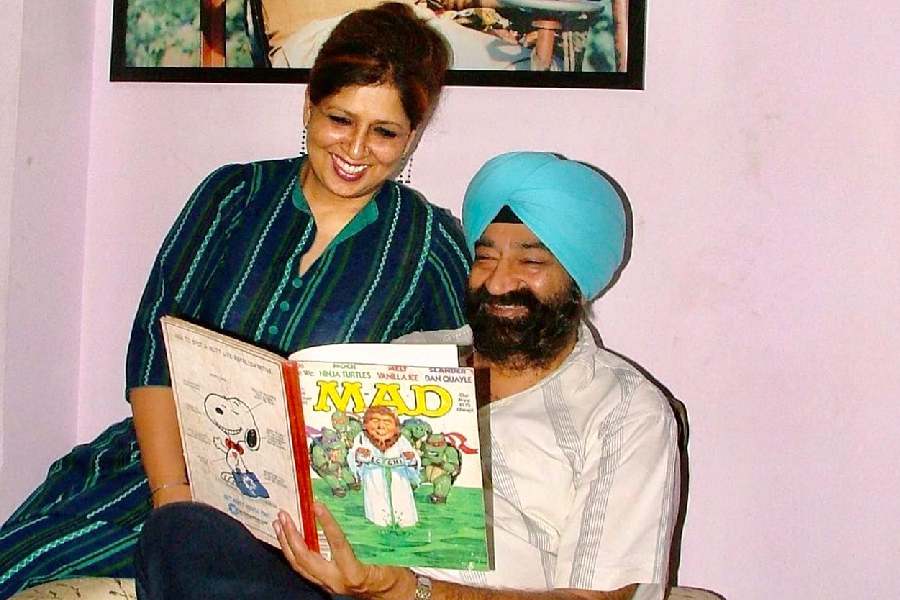 |
| Kanthal ki biryani |
Vegetarian food is in. And pigs are sprouting wings, you say? Well, it’s time to take off those blinkers and read the signs, for everything from kale to the humble pumpkin is making its presence felt on the high table. With the country’s top chefs rustling up green delicacies, even hard core non-vegetarians who’d make a broccoli floret wither under their wintry glances are digging into yogutuli spanaki and edamame gnocchi.
So what’s putting the vegetarian platter in the limelight? It’s ‘healthy’. So is a bowl of spinach, but most people still wouldn’t touch it with a bargepole. But how about some tomato caviar? Or goat cheese crotin with gazpacho sorbet? Truffled fromage de chevre with asparagus and crushed Kalamata, anyone? It’s time to dig in…
A twist in the tale
 |
| Kanthal ki gilauti kebab is an Awadhi delicacy |
“Vegetarian food isn’t about throwing some pasta and cream sauce in a bowl,” says Deepak Mishra, executive chef, Swissôtel Kolkata. No, it’s about transforming beetroot purée or gravy into spheres — the outer skins of which burst to release the flavoured liquid. Truffle oil powder, carrot and tomato powder, mushroom and ginger espuma (foam) are all part of the molecular gastronomy game. Then again, the half-moon shaped agnolotti pasta is stuffed with a macadamia and Ricotta filling and served with tomato and grappa fondue, wilted greens, Fontina and sherry cream at the Café Swiss.
The focus is on preserving the natural taste rather than smothering it with spices. At The Oberoi Udaivilas, basic cooking techniques are practised, like marinating tomatoes in their own juice with a dash of extra virgin olive oil and some Maldon salt. And like in a seafood Ceviche, vegetables are also marinated in lime juice, salt and extra virgin olive oil, which cooks them partially. In his Medley of tomatoes, executive chef Manish Sharma clubs together dishes from Italy, Mexico and Spain to create his platter of Bruschetta, Basil pesto, Guacamole, Gazpacho and fresh salad.
 |
| Spaghetti with Parmesan foam and organic tomato caviar |
In the mood for some contemporary Asian cuisine? Try the wasabi serabi in newly opened Delhi restaurant, Circa 1193. A crêpe of wasabi paste, stuffed with crispy potatoes and a creamy onion mixture, it’s baked and topped with a sour Japanese lime and soy sauce. Though his dishes are influenced by Japanese cuisine, executive chef Achal Aggarwal gives them a turn by adding Thai herbs. Come April and you could also order Mozzarella air balls and Balsamic sauce or ‘hot ice-cream’ that melts when it cools.
While the exotic ingredients of vegetarian items are what are attracting many, in the case of well-travelled diners, the benchmarking is against top foreign restaurants. Sharad Dewan, executive chef, The Park, Calcutta, however finds it easier to satisfy vegetarian guests with international rather than Indian fare.
Vegetarian sushis are on a roll at Zen, The Park, Calcutta. “When we opened Zen in 2007, the demand for vegetarian food was as much as for non-veg, on some days even more,” says Chef Dewan. The assortment, of course, keeps changing — the lettuce roll and the potato and corn salad being among those introduced this season. Cheese sushis too, Dewan believes, have caught on in Calcutta. While these have Cheddar, Philadelphia and Gouda cheese, cottage cheese and potatoes feature in the Teppanyaki food served at Zen.
 |
| Yogutuli spanaki is a Mediterranean salad on offer in Souk |
If all you expected to see at Goan restaurants were lobsters and crabs, you’re in for a surprise at the Alila Diwa near Majorda Beach. Executive chef Amit Bharadwaj rustles up some green pea coulis tossed spaghetti with a Parmesan foam and organic tomato caviar for specials. “I like to experiment with textures,” he says.
For those who have the Mediterranean mezze on their mind, yogutuli spanaki, a warm spinach and onion salad topped with garlic and crisp fried onions served at Taj Bengal’s Souk, may be just the thing. Or how about the potato kibbe stuffed with cracked wheat and sumac flavoured vegetables? Chick peas, olives and prunes are cooked with tomatoes to create a Greek speciality, the mackronia ke spanaki. Says executive chef Sujan Mukherjee: “70 per cent of the Souk crowd is vegetarian.”
Tracing the trail
 |
| Katrikai vartha chathu is a brinjal delight from Kerala’s Mopla cuisine |
How organic is ‘organic’? Chef Sharma vouches for his ingredients, which come from Oberoi Udaivilas’ own kitchen garden. The hotel’s chefs also source rare herbs and spices from the Maharana Pratap University of Agriculture and Technology. In addition, there are local farmers who grow organic produce exclusively for them.
At Alila Diwa, the vegetables are sourced from small tribal farmers, while the rice comes from surrounding paddy fields. “If I have a seafood or meat display, I think it’s an added feather in my cap to have an organic vegetables display,” says Chef Bharadwaj.
Authenticity is the mantra. So the raw materials for Japanese dishes are imported from Japan, the tomato pilati, Provolone, Pecorino, Fontina and olive oil’s from Italy, the mushrooms and fresh artichokes from Thailand and the Greek feta from Greece.
The twain meet
 |
| Wasabi serabi in Circa 1193 comes topped with sour Japanese lime and soy sauce |
“Food has to be fun,” says Chef Dewan, and with experimental food being the rage, chefs are adding the ‘wow’ factor to their platters in more ways than one. The Park has guests making a beeline for the pumpkin risotto with achar oil ice-cream. On the other hand, appam comes teamed with Thai curry, while noodles are being topped with South Indian curry. In Jamavar, the Indian speciality restaurant at Leela Kempinski Mumbai, sabzi vilayati features European vegetables such as broccoli cooked in an Indian gravy.
For those who like nothing better than a pot of warm cheese fondue, there’s the cheese and spinach fondue and the tomato fondue at Mio Amore and KK’s Fusion in Calcutta. Chef Pradip Rozario serves these with cottage cheese, baby corn, bell pepper and small potatoes kebabs. The star, of course, is the vegetable seekh kebab for which marinated minced vegetables are skewered and cooked in a clay oven.
Traditional does it
 |
| The sushi platter at The Park, Calcutta |
The vast repertoire of vegetarian Indian cuisine has chefs digging deep for authentic traditional recipes. This makes the menu not just state, but also district and style-specific. South-Indian food no longer implies idli-dosa-appam-vada; instead guests are busy tucking into Chettinad, Andhra and Mopla cuisine at The Hub’s buffet in Taj Bengal.
“The term ‘Mughlai’ is almost out of our dictionary,” says Chef Dewan. What’s in? The vegetarian variants of traditional dishes. Take the jackfruit halim for instance; even the gilauti kebab, an Awadhi dish traditionally associated with smoked mutton mince, has a jackfruit counterpart this season.
On its way out is the ‘spicy Indian curry’ tag. Dishes in which spices are used to enhance the vegetable’s flavour are now being brought to the forefront. So the inji (jackfruit) curry at Taj Bengal is tempered with mustard seeds and curry leaves, while the katrikai vartha chathu has brinjal and raw mangoes tossed with grated coconut and red chillies. Both dishes are part of Kerala’s Mopla cuisine and bears traces of Syrian influence.
The “unique aroma and taste” of the kanthal (jackfruit) ki biryani served at Jamavar is what draws guests, says Chef Surender Mohan of The Leela Kempinski. Chef Bharadwaj tries to balance between the vegetarian and non-vegetarian items on his menu. So if there’s a keema cheese naan, he puts in a Gorgonzola cheese green chilli cumin naan as well.
The paneer pasanda gets an interesting twist at the Hyatt Regency Mumbai. Executive sous chef Mahesh Kini has the classic dish, which consists of two layers of cottage cheese with dry fruits sandwiched in between, rolled in filo pastry and placed in the tawa (oven). Bite into the tawe ka paratdar paneer and you taste the cheese, dry fruits and spices cocooned in a crunchy exterior. Yum!
Edamame gnocchi
 |
Ingredients
200gm edamame paste 20gm potato flour 10gm corn flour 5gm Aromat 1gm salt 5ml truffle oil 5gm onions, chopped 2gm jalapeños 2gm cilantro 1gm whole truffle slices
For soy lemon butter sauce
50ml soy 10gm butter 2gm chopped parsley 10ml yuzu juice 25gm chopped tomatoes 2gm chopped garlic 2ml chilli oil 10gm mirin
Method
Make the gnocchi using the edamame paste, potato flour, corn flour, Aromat and salt. Make the sauce. Keep aside. Blanch the gnocchi for 5mins, toss it in truffle oil with onions and jalapeños. Finish with sauce. Garnish with fresh truffle slices and cilantro.










